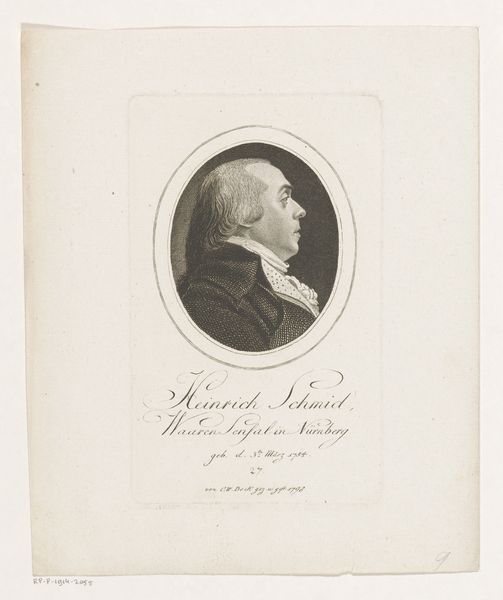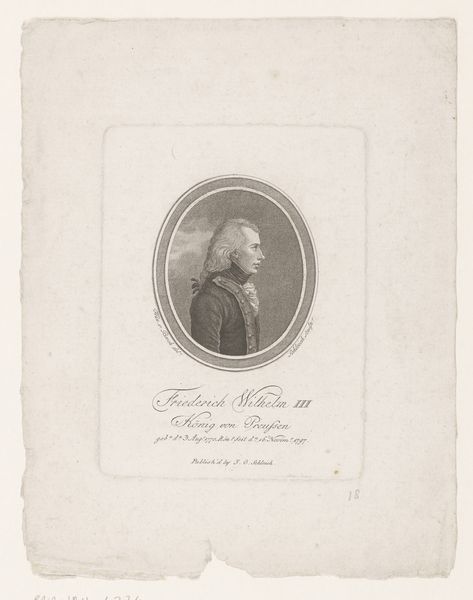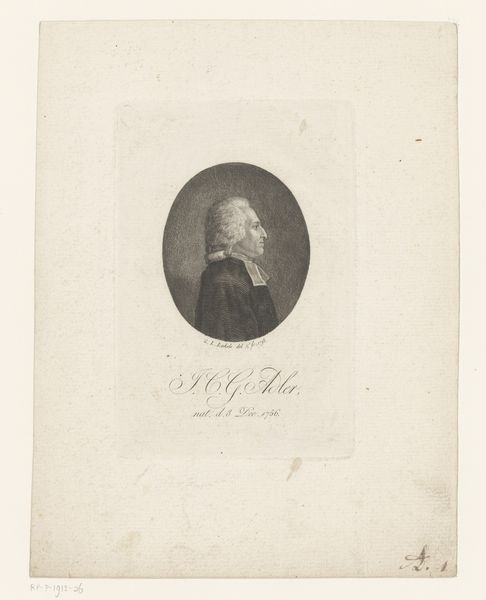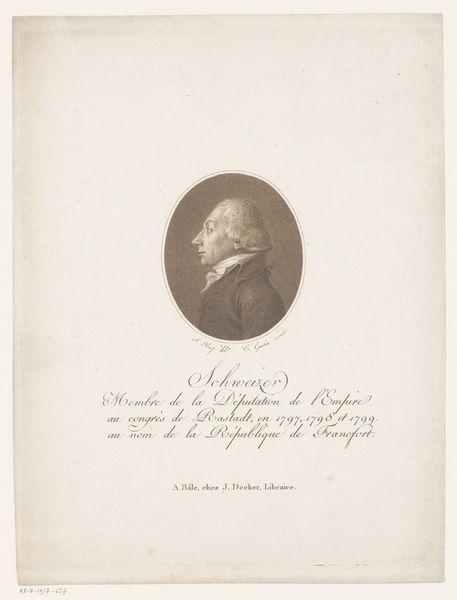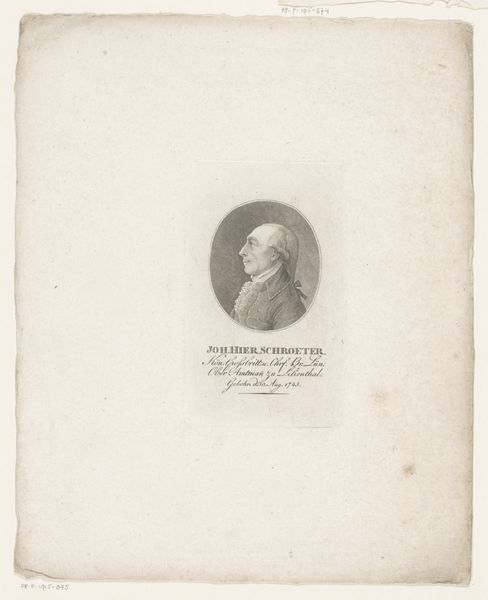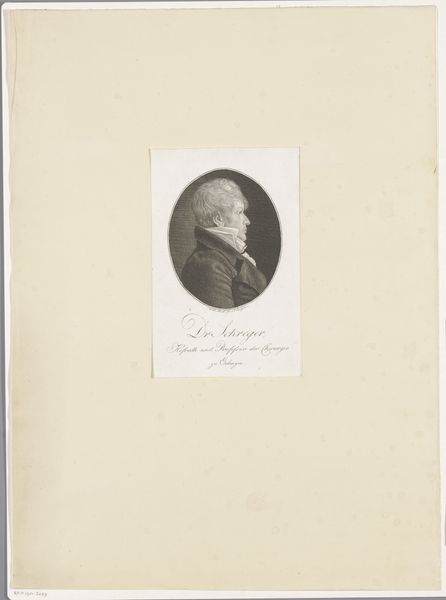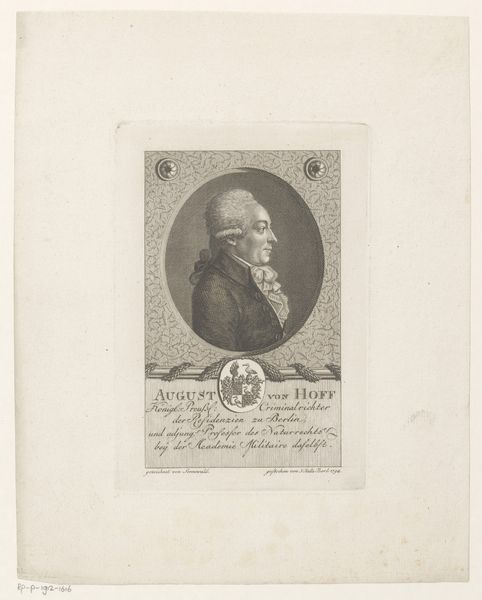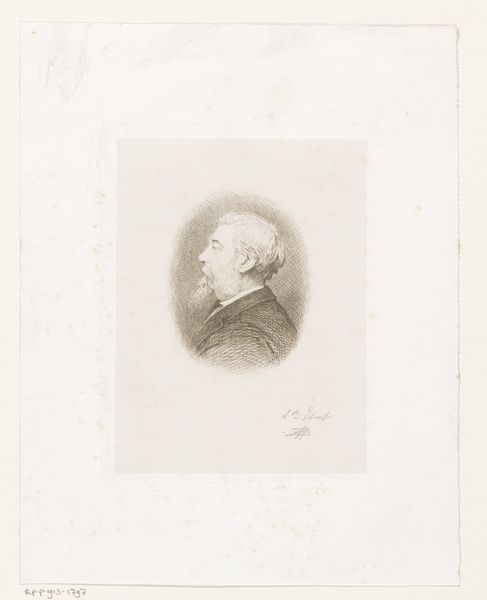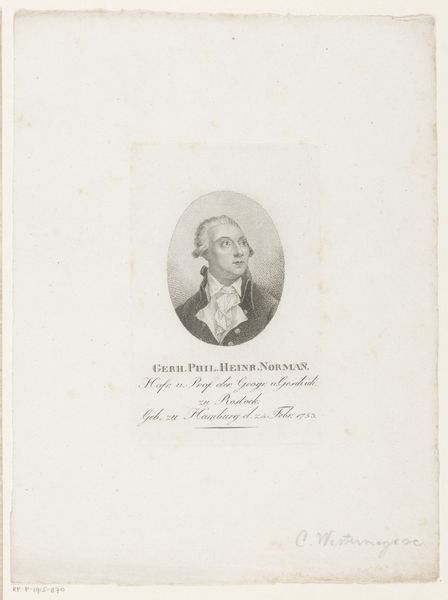
print, paper, engraving
#
portrait
#
neoclacissism
# print
#
old engraving style
#
paper
#
line
#
engraving
Dimensions: height 157 mm, width 97 mm
Copyright: Rijks Museum: Open Domain
Curator: Here we have Christoph-Wilhelm Bock’s 1804 engraving, "Portret van Johann Jacob Baier," held here at the Rijksmuseum. A delicate rendering, wouldn't you say? Editor: Intricately lined, to be sure, but austere. It lacks vibrancy. The profile seems captured more as a study than an intimate portrayal. Curator: Precisely! It showcases neoclassicism's formal precision, emphasizing line and form over expressive emotion. Note the circular framing, echoing classical medallions, lending the subject an air of enduring importance. Editor: I am intrigued by the subject, Baier himself, identified below the portrait as a Minister and Preacher. The engraving situates him within a specific religious context; the portrait serving to reinforce the sitter’s status within his community. Curator: Indeed, but look closer at the execution! The delicate hatching defines the planes of his face. And observe the subtle textures, capturing the sheen of his coat. Such technical refinement is key. Editor: Agreed. But considering its societal role as a publicly-distributed print, I think of how access to imagery, especially portraiture, had changed by the early 19th century. The politics of who is memorialized visually are central to its reading. It is so fascinating to think about the purpose it served within religious and societal power structures. Curator: Yes, fascinating—especially if considered from a formal angle! Think about the choices inherent in this highly controlled technique to convey both Baier’s social stature, but in so doing to subtly display Bock’s mastery. Every compositional choice amplifies a specific set of aesthetic values. Editor: Very true. Examining the history through the lines and forms does help see how images construct the social standing of individuals and by extension the power relations of institutions. It does that while preserving and projecting ideals and reinforcing the legitimacy of figures like Johann Jacob Baier. Curator: Seeing how history imbues form itself with purpose offers so much! Editor: I agree. Now, I look forward to discovering how these formal aspects, through their inherent history, give meaning.
Comments
No comments
Be the first to comment and join the conversation on the ultimate creative platform.
